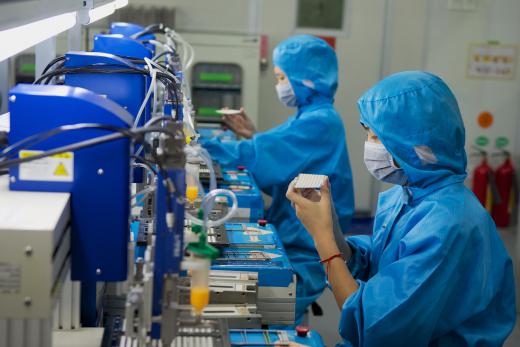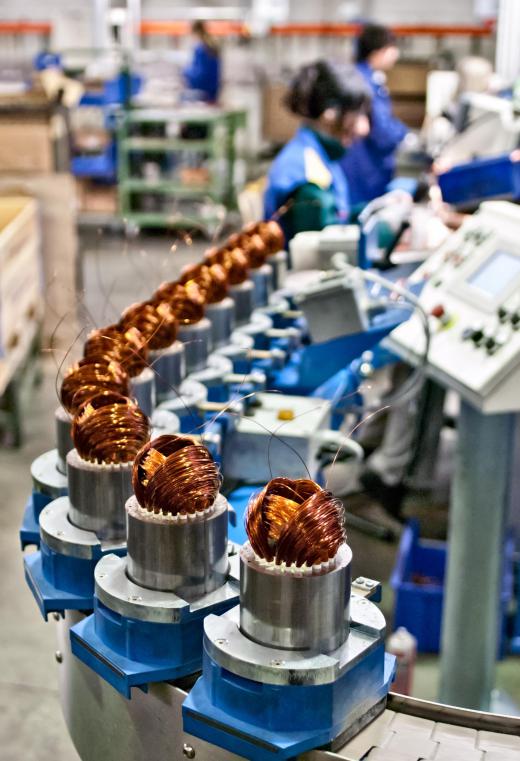Successful electronics assembly within a manufacturing environment requires strategic organization of fabrication areas, maintaining automated machines, motivating workers, and thoroughly testing the devices. In addition, the assembly area must have regulations regarding static control to prevent accidental power surges that damage sensitive electronic components. Spacing among all the assembly areas should also be considered so that efficiency remains high.
Electronics assembly must be performed in a certain series of steps, from initial board bonding processes to final component attachments. As a result, each fabrication area must be arranged in the order of the steps; materials cannot be transported in zigzag patterns across a production room since efficiency will be reduced significantly. For example, fabrication area "A" should be near area "B" and "C."

Automated machines perform the majority of modern electronics assembly processes. Any unexpected breakdowns can be costly for the manufacturer; managers should have preventative maintenance schedules for each machine. The machines should be properly adjusted and lubricated on a periodic basis so that breakdowns are minimized. Workers should also be well versed in troubleshooting any small machine problems during the manufacturing process; experienced workers can repair a small problem before it becomes a major issue that affects fabrication time.

The human element is important in electronics assembly as well. Workers should have a management team that stresses teamwork and motivation; each worker should feel valued and comfortable in his or her position. For example, workers that feel comfortable in their abilities should be able to quickly access concerns about a poorly operating machine, or bad product, and notify their immediate supervisor. Working as a team will help the product remain viable and keep the company efficient.
Quality assurance is a key factor in electronics assembly. Each portion of the device should be individually tested for overall functionality before moving on to the next area of the assembly process. The final product should be tested just like a customer would use the item; if possible, workers should take it into the field to verify that the internal electronics can withstand the weather elements.
Static control is a major concern during electronics assembly. The production floor should have static control mats; workers should also have grounding straps attached to their ankle or wrist during electronic handling. Any static discharge can damage individual components, or the entire board, which creates costly waste. The assembly line floor should have enough space between work areas for adequate worker movement, but not too much space that employees must walk far distances. Transporting electronics far distances can build static charges throughout the work area; walking far distances also reduces efficiency for overall production.
